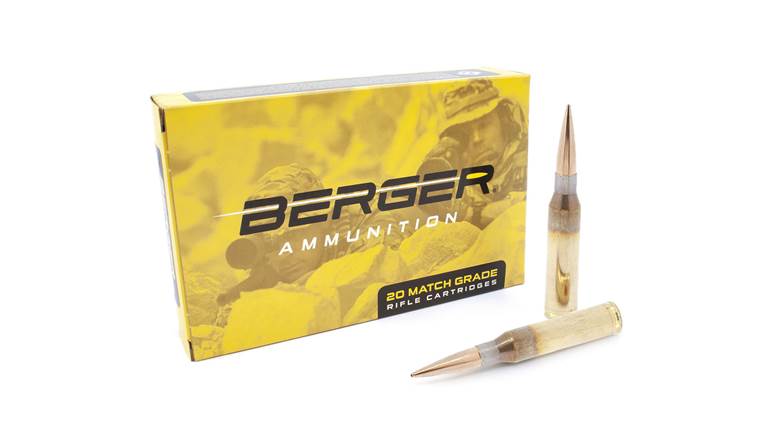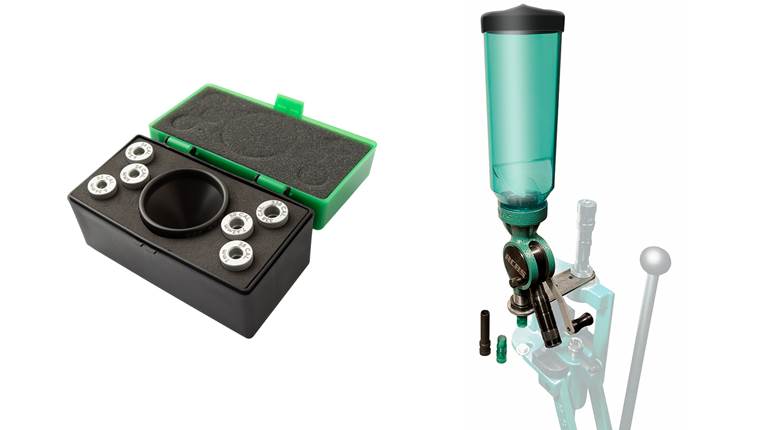
Although people get into handloading for many different reasons, the most common one is to save money. Sure, even the most inaccurate range fodder is going to eclipse the price of your equipment investment, eventually. However, if your loads are not shooting better than match-grade, store-bought ammunition, you are not getting the full value out of your tools or your time.
When most folks do the math to figure out how many rounds they’ll need to make before they break even, they typically base it on inexpensive practice-grade ammunition. If you start building your rounds to break the m.o.a. barrier, then you will get a more effective and valuable round per bullet for the cost. With just a few extra steps, you can recoup the money you spent quicker, all while shooting tighter groups. Here are my top five recommendations on how to get there.
Tip One: Do A Real Load Development.
Yes, I know that group shooting is flat-out boring. You don't have to sell me on that, I do it for a living. On the other hand, I have never found a sub-m.o.a. load by using a buddy’s pet recipe or doing just a ladder test. Even though it might cost me an extra box of bullets, I always run through the entire powder spectrum of a few contenders to see what groups best.

I also apply the same methodology to my hunting rounds, because sometimes I find a load that groups so tight that it eliminates the need to make a separate match round. Having super-accurate hunting ammunition does have its place in the field too, as those sub-m.o.a. shots do present themselves. For instance, I had a doe at 423 yards that only presented its neck between two trees. A rough handload would have been out of the running for a shot like that, and downright unethical.
However, my load shoots 2" groups at that distance, and I had perfect wind conditions coupled with a terrific shooting position. The result? Meat in the freezer. So go ahead and spend a few extra dollars on another box of bullets and keep track of your testing. It’s worth it.
Tip Two: Weigh Your Charges.
On the range, there is a sliding scale between speed and precision. Fast trigger slaps are good enough for close-range work when you need rounds on target ASAP, but slow trigger presses are always the way to get your tightest groups. The same relationship exists on your loading bench. I have made some great 1.5- and even 1.0-m.o.a. ammunition loads using just a powder measure, but when I want to see sub-m.o.a. results, I exclusively weigh each charge.

I started off by using a thrower, mechanical scale and trickler, and I shot many a bug hole with that method. Later in life (as I saved the money that would have gone into buying boxed ammunition), I purchased a powder dispenser and found reloading speed that made metering alone hard to justify. After another few months of saving on ammunition, I doubled that speed by buying a second dispenser to run simultaneously.
Tip Three: Primer Pocket Treatments.
A repeatable point-of-impact is the product of uniform powder burn from case to case. Uniform powder burns are the product of uniform ignition. Although there is little that we can do to alter the performance of a primer, there are processes that we can put our brass through to ensure that they get struck the same way and transfer their flames completely and consistently. Primer pocket uniforming “squares” the pocket wall to the pocket floor, ensuring that each primer gets seated to the same depth and takes a positive strike from the firing pin.

From there, you’ll want to ensure that the spark gets completely through the flashhole and hits the powder the same way every time you press the trigger, which is why we deburr it. RCBS makes a tool for each of these tasks, and the total investment is typically less than $100. Both can be chucked into a drill, and before you know it, your standard brass will start to perform more like match-grade brass.
Tip Four: Use Better Brass.
While most reloaders put a tremendous amount of attention into powder and bullet selection, many of them will stuff those carefully chosen components into any old case. To put it plainly, better brass will yield better ammunition. Top-quality brass is made in smaller lots and is kept to tighter tolerances, resulting in more uniform performance. It’s uncanny how precise this stuff can be, too. I recall once picking up 10 random pieces of .308 Win. Lapua brass and weighing them…for science. After about five, I had to stop and check to see if my scale was working properly, because they were all the same weight, right down to the tenth of a grain.

To put it into perspective, after putting a spackle bucket of good-quality brass through a full match-prep, the best I could do was give or take three full grains. High-end brass is another “you get what you pay for” venture in life, but in a good way. The “good stuff” tends to last a little longer than other brass, which does indeed help justify the extra expense a bit.
Tip Five: Improve Yourself.
After reading these tips on how to make ammo that can hold a sub-m.o.a. group, be sure to ask yourself if you can shoot a sub-m.o.a. group. At the end of an NRA Reloading course, I had a student make a joke by saying “he’s talking about groups, but I shoot shotgun patterns.” We all shared a laugh, but it did get me thinking. If the best a shooter can do is two m.o.a., then they can’t expect to see ammunition performance any better than that.

So, now I recommend an NRA Rifle (or pistol) course before setting out to do your first load development. Learning the fundamentals of shooting a sub-m.o.a. group is going to be a key part of evaluating ammunition performance. Never completely reject that the weak link in the accuracy equation could be yourself. Pride can be extraordinarily expensive and can get between you and your best ammunition.
Whenever a friend tells me they're "thinking about getting into handloading,” I have a few general responses, all invariably containing the phrase “rabbit hole." At times, I have cursed my rifles the entire way back to the loading bench but those moments are balanced with occasions where I’ve pulled the trigger and came off of the scope with an indescribable grin on my face. There are few things more joyous and freeing than hitting that node and sailing five rounds through the same hole. It’s a feeling that every shooter should experience at least once, and I hope these tips help you along your journey to your best ammunition.






































